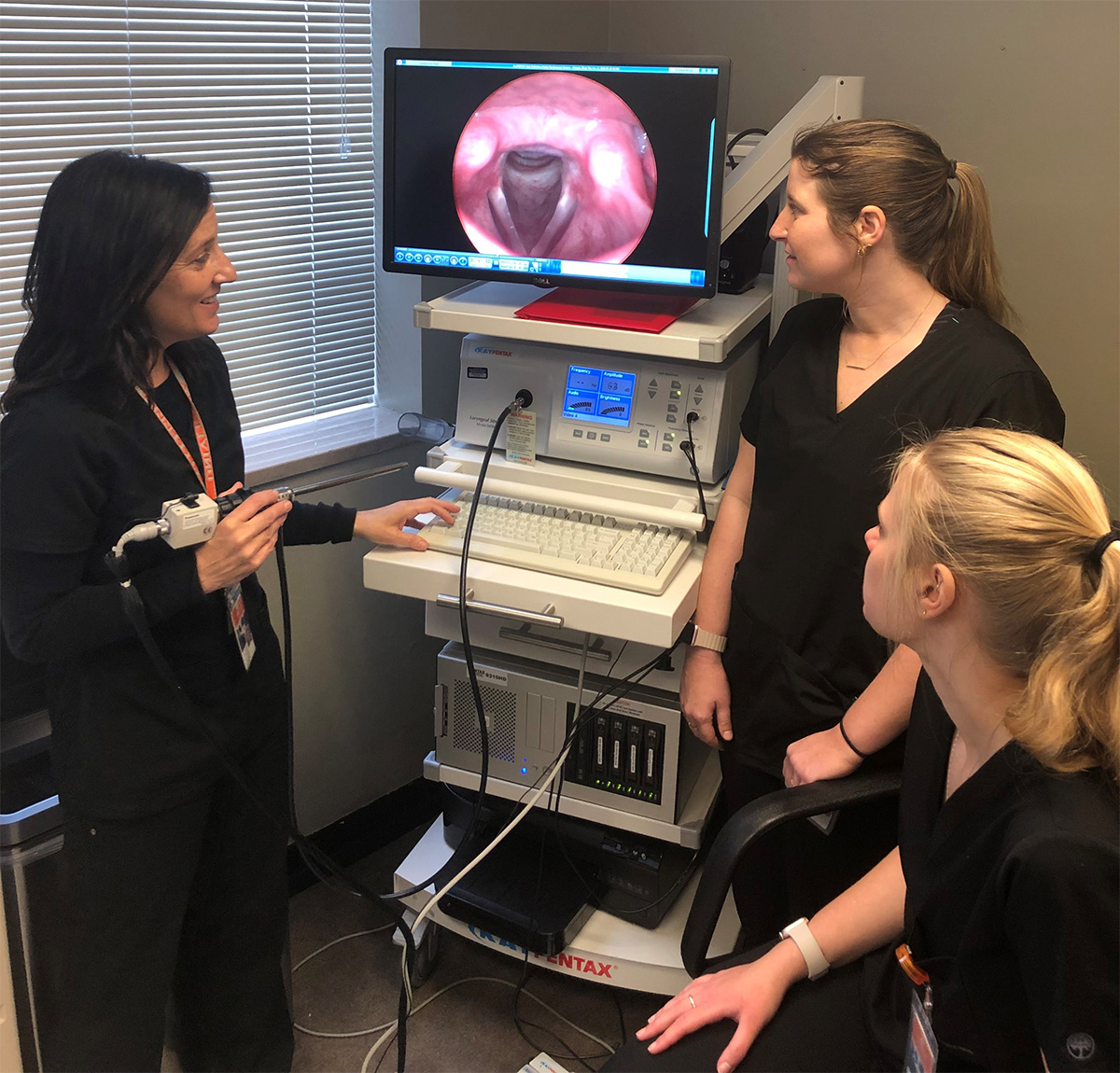Voice Disorder

A voice disorder is present when an individual expresses concern about having an abnormal voice that does not meet daily needs—even if others do not perceive it as different or deviant (American Speech-Language-Hearing Association [ASHA], 1993; Colton & Casper, 2011; Stemple et al., 2010; Verdolini & Ramig, 2001).
Voice disorders may occur at any age and may have a variety of causes, ranging from structural changes to the laryngeal or respiratory system, neurologic changes, and/or inefficient use of the vocal mechanism.
UTHSC offers comprehensive evaluation and treatment for patients with all types of voice disorders. Our speech-language pathologists have specialized training and work closely with referring physicians to provide the best possible care for each patient.
Evaluation
Our clinic features the most current equipment including high-definition imaging of vocal fold motion. This can be a valuable asset in diagnosis and treatment of voice and upper airway disorders. Reports and recordings of all exams are sent to the referring physician for medical review and diagnosis.
Some of the assessments we provide:
- Video Stroboscopy utilizes an endoscope and a stroboscopic light source to visually evaluate laryngeal function and vibration during phonation.
- Acoustic and Aerodynamic Assessments
- Perceptual Voice Evaluation
Treatment
We offer the following types of therapy:
Behavioral Voice Therapy for all types of voice users, including those affected by head and neck cancer, and professional voice uses such as singers, actors, teachers, and public speakers.
Respiratory Training for upper airway breathing disorders such as laryngeal obstruction or vocal cord dysfunction.
Alaryngeal Voice Restoration, including training in use of artificial larynx devices, esophageal speech, or tracheoesophageal voice prosthesis (TEP) for individuals who have undergone a total laryngectomy.
The voice therapy setting is typically offered in individual sessions, provided once per week and includes information regarding preventative care through patient education along with identification, training and facilitation of proper voice and breathing techniques.
We also offer a monthly Knoxville Laryngectomy Group at the UT Conference Center. This group is open to all people with a laryngectomy and their families, friends, and caregivers.
Speech, Language, Swallowing, and Voice
- Adult Neurogenic Communication Disorders
- Augmentative and Alternative Communication
- Aural (Re)habilitation for Hearing Loss
- Autism Spectrum Disorder or Social Delay
- Feeding and Swallowing Issues
- Head and Neck Cancer
- Language Delay or Disorder
- Parkinson's Disease
- Reading/Writing Delay
- Speech Sound Disorder
- Stuttering
- Voice Disorder
